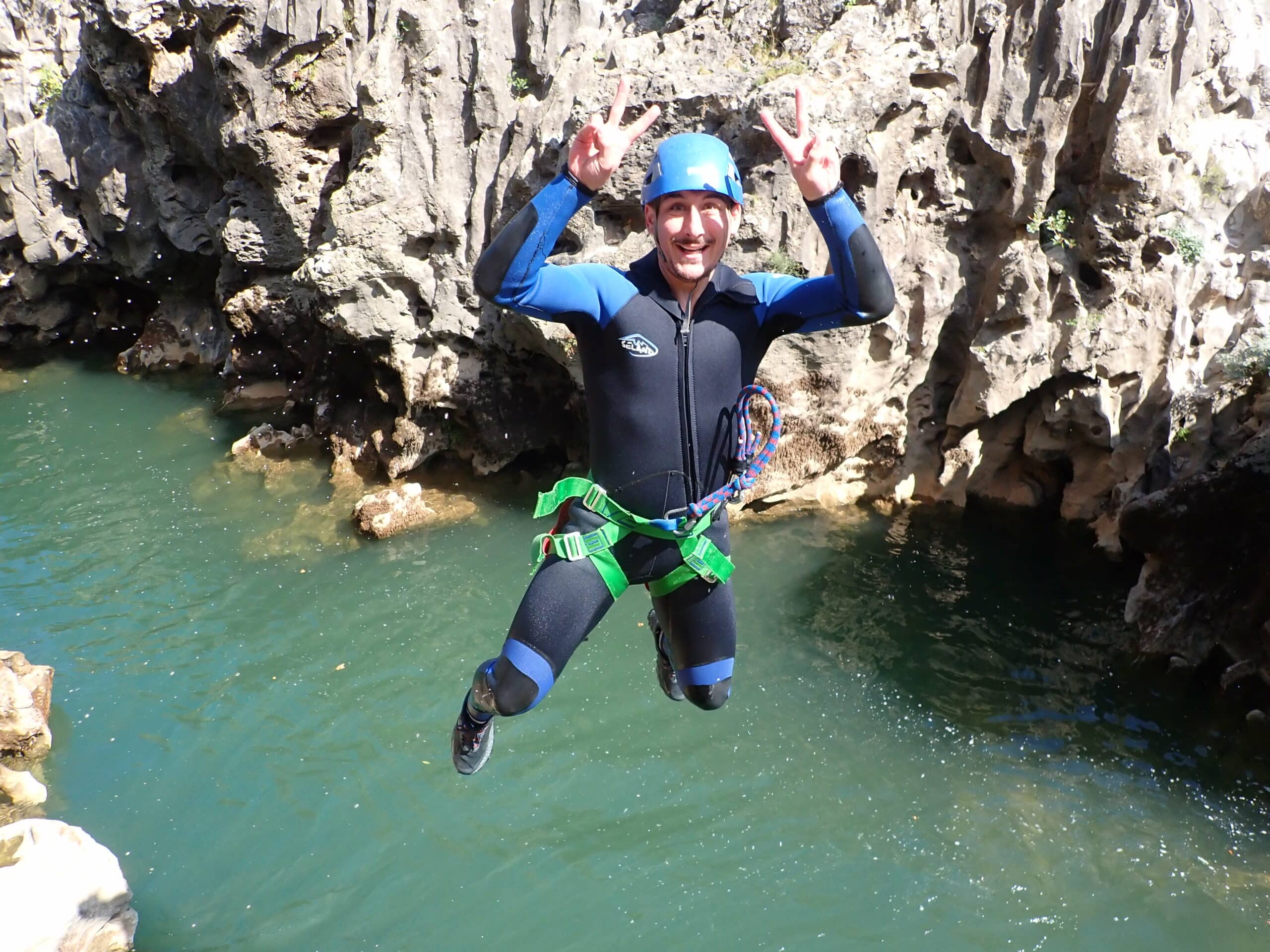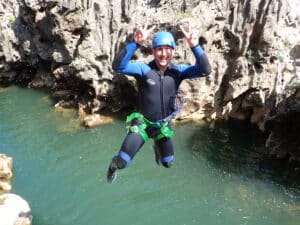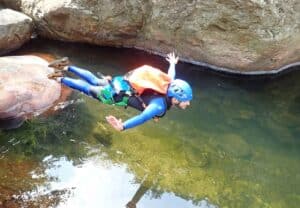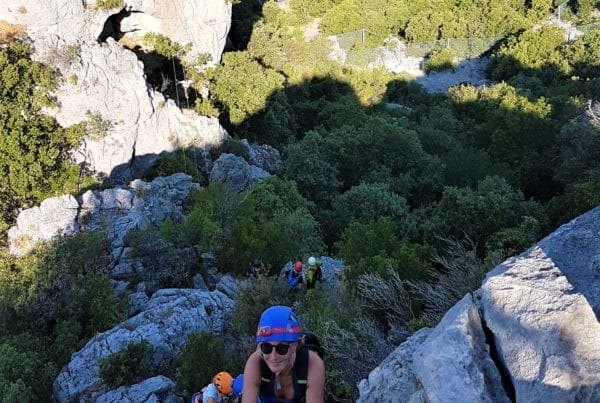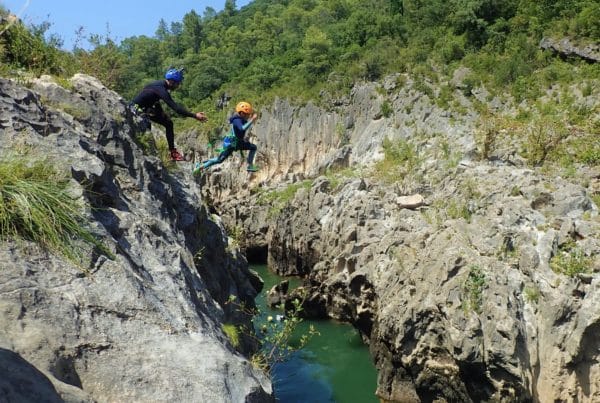What is canyoning?
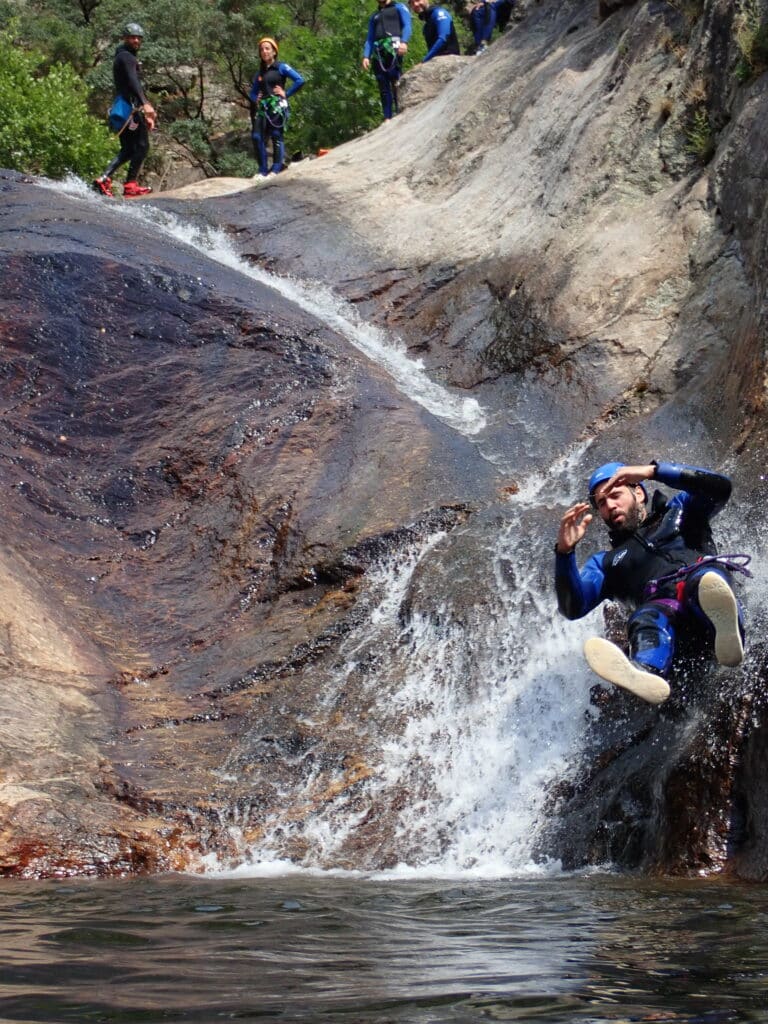 Canyoning is a white-water sport. It involves moving along riverbeds in narrow gorges and ravines. The activity is made more fun by the vertical crossing of waterfalls of varying heights. River rafting is a popular spring and summer sport.
Canyoning is a white-water sport. It involves moving along riverbeds in narrow gorges and ravines. The activity is made more fun by the vertical crossing of waterfalls of varying heights. River rafting is a popular spring and summer sport.
Who can go canyoning?
Canyoning can be enjoyed by all ages, from 7 to 77. However, you must be able to swim and be in good health. You’ll also need to select a course suited to your physical condition and ability.
What outfit?
You often ask us about the right equipment for a canyoning trip. Here’s some advice on what to wear from head to toe, so you can enjoy the activity to the full. You’ll be all set for a canyoning adventure with family or friends on your next vacation.
Canyoning is often practised in small mountain streams, and the water is generally cool, especially in spring. In summer, however, the cold is less of a problem.
To ensure that our body heat is maintained at 37 degrees Celsius, it’s a good idea to think ahead before, during and after canyoning. Before starting a canyoning session, make sure you’re sufficiently dressed so as not to tire your body unnecessarily. You’ll need all your energy afterwards!
Canyoning wetsuits
During the activity, you’ll wear a neoprene wetsuit that’s tailored to your body size, as well as a swimsuit. Weight and size are essential when booking with your chosen company. Wetsuits are 4 to 5 mm thick to optimize ease of movement and thermal support. Wetsuits are generally full-body with integrated hoods. In tropical countries, shorty suits are available (suits with bare forearms and uncovered legs).
The advantage of a full-body suit is that, in addition to thermal comfort, it also provides good protection. It protects you from rubbing against rocks. It’s a great advantage, and means you can enjoy your canyoning outing with greater peace of mind.
Gloves, top and lycra for extra comfort
For the cooler periods of the canyoning season. In addition to your neoprene wetsuit, you’ll need a lycra or top for your upper body. For your feet, get 3 mm neoprene socks. These double-skin socks fit snugly around the body and provide comfortable thermal support. Lycra wetsuits can also be used to protect against the sun’s rays on approach walks. Neoprene gloves can also be used for cool canyoning descents. This requires a little more practice, however, so that you can continue to handle ropes and carabiners.
Finally, at the end of your outing, make sure you have a change of warm, dry clothes and a towel!
Which shoes?
Correct footwear on a canyoning trip is a guarantee of comfort and safety.
Special shoes for this activity are available on the market, designed to maintain grip even on wet rock. These specialized shoes are still quite expensive, however, and are aimed at people who want to be autonomous in canyoning. For occasional outings, sneakers with non-smooth soles or hiking boots will do just fine.
High-top sneakers will protect your inner and outer malleoli. Alternating between water passages and boulder chaos requires good foot support.
Water shoes with very soft soles are generally not recommended for canyoning, especially if the route involves a lot of walking. This is because you’ll feel the stones in direct contact with your foot, which is not comfortable at all.
Canyoning and eyeglasses
The question of prescription glasses is often raised when you’re out and about. Can I take them? Do I risk losing them? If I can’t see a thing, what am I going to do, and isn’t it dangerous? Are contact lenses a good alternative?
My main advice to people going to sessions with me is to take a good look first!
Having a comfortable view is essential when walking between boulder chaos or before making a jump. It’s a guarantee of safety, and it comforts us as instructors to know that you’re comfortable enough! I therefore advise you to take your glasses with you, with a safety cord if possible, so you don’t lose them. The moments when you’re most likely to lose them are when your head is completely submerged. These watery passages are encountered on jumps, natural toboggans, or zip lines ending in the water.
Practical tips for taking your glasses with you without losing them
However, these fun workshops don’t make up the bulk of the activity, which is more about getting around in this canyon environment. For these aquatic passages, you have two options. Either hold your goggles on your nose with one hand and the other hand tightly against your body to make the jump; or position your goggles in your own wetsuit at torso level, having unzipped and then re-zipped the wetsuit correctly. This is a very good option that works very well. Once out of the water, you can put your goggles back on comfortably. This makes it easy to keep your goggles on hand throughout the activity.
The alternative of lentils is not recommended. Contact lenses tend to get lost more easily during water passages. You can’t find them because they’re too small, and the canyoning session ends without good vision. To use contact lenses, you’ll need diving goggles for water crossings, which can be cumbersome to use.
Safety equipment
You’ll need a harness and a helmet to move safely through the various vertical difficulties of a canyon.
This equipment should never be bought second-hand without a maintenance logbook. Each harness or helmet has a serial number that tells the story of the equipment. As an outdoor company, we adhere to a strict maintenance logbook. This enables us to track each piece of equipment over time. The equipment we use is classified as PPE (personal protective equipment).
A harness allows you to sit comfortably when abseiling on a rope. It can also be used to cross horizontal handrails. This is made possible by two safety lanyards fitted to the harness beforehand.
On the harness, you’ll find a connector and an eight. This is a metal descender that enables you to abseil down a rope in complete safety, while controlling your descent speed. Helmets are also a must-have in canyoning. It protects you from uncontrolled slips in slippery conditions. It also protects you in the event of falling rocks.
Ancillary equipment
Ropes are the last essential safety element. They enable you to move vertically in the canyon, and to perform rescue and re-escape maneuvers if necessary.
Last but not least, you’ll need a special bag with a watertight canister. This bag is deliberately perforated at the bottom so that water can escape during water crossings. Inside the bag, you’ll find a watertight canister in which to store a first-aid kit and food! Bottled water can be carried in the bag, except for the waterproof can.
Here you are at the end of this article, I hope I’ve answered as many questions as possible about canyoning equipment.
Naturéo Sport & Aventure offers a range of canyoning courses in the Hérault and Gard regions of France from April to October, whether you’re a beginner or an expert.

